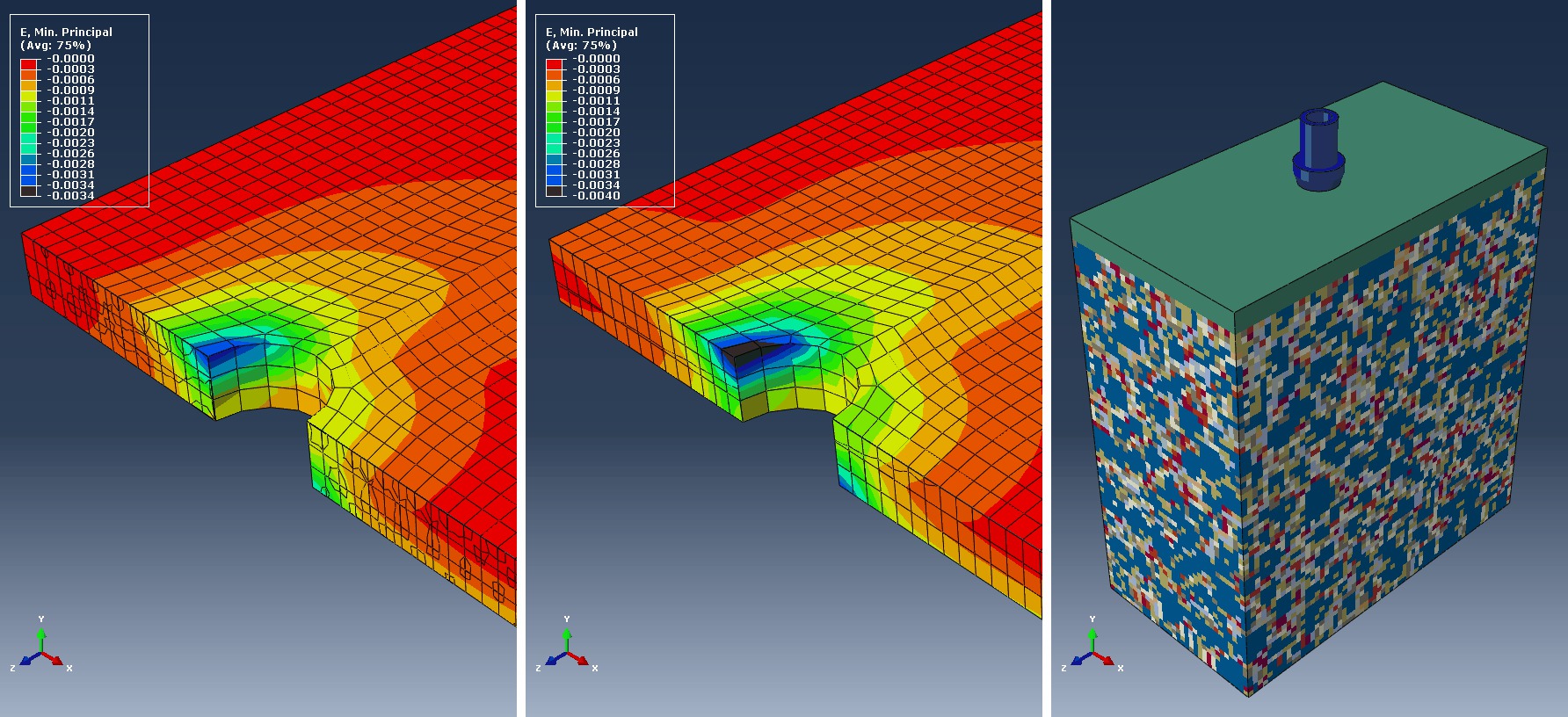IADR Abstract Archives
An automated framework for constructing numerical model from radiographic images
Objectives: To develop a framework that can automatically perform segmentation of jaw bones’ radiographic images, characterize mechanical properties of osseous tissues, construct finite element (FE) model and conduct stress analysis.
Methods: The automated characterization of bone’s mechanical properties was developed. CT images were smoothed by bilateral filtering and the image pixels were classified and labeled by K-means clustering. Then, the bone was segmented by setting a threshold of grayscale values. Finally, an FE model was formed and each element was assigned with a value of Young’s modulus estimated from the intensity label of the pixel nearest to the element’s centroid. The framework was then used to create an FE model for a previous in vitro study. To replicate the same bone model, an artificial bone model was created by attaching the closed-cell foam to a 2-mm thick cortical shell. The micro-CT images of the bone model were input to the framework for image segmentation and material characterization. Young’s moduli of 16~123MPa (from the manufacturer's data sheet) were assigned to elements in cancellous bone according to the ten intensity labels classified. Another FE model with a uniform Young’s modulus of 47.5MPa was created as a control.
Results: When the implant was applied a vertical load of 130 N, both our FE models and the control predicted a peak minimum principal strain of -0.0008 at the buccal and lingual side of the cortical bone, which was close to the value (-0.001) measured by the experiment. However, when an oblique load (130 N) was applied, our FE model predicted a peak minimum principal strain of -0.0034 that perfectly matched the experimental study while the control produced a 17.6% error.
Conclusions: The developed framework was able to automatically reconstruct the numerical model. With our algorithm for assigning material properties, our FE model was proved to provide more accurate strain values at local regions. The next step is to conduct experiments to confirm this finding at different locations of local strains. Our ultimate goal is to enable implant design optimization using patient-specific bone geometry and material properties.
Methods: The automated characterization of bone’s mechanical properties was developed. CT images were smoothed by bilateral filtering and the image pixels were classified and labeled by K-means clustering. Then, the bone was segmented by setting a threshold of grayscale values. Finally, an FE model was formed and each element was assigned with a value of Young’s modulus estimated from the intensity label of the pixel nearest to the element’s centroid. The framework was then used to create an FE model for a previous in vitro study. To replicate the same bone model, an artificial bone model was created by attaching the closed-cell foam to a 2-mm thick cortical shell. The micro-CT images of the bone model were input to the framework for image segmentation and material characterization. Young’s moduli of 16~123MPa (from the manufacturer's data sheet) were assigned to elements in cancellous bone according to the ten intensity labels classified. Another FE model with a uniform Young’s modulus of 47.5MPa was created as a control.
Results: When the implant was applied a vertical load of 130 N, both our FE models and the control predicted a peak minimum principal strain of -0.0008 at the buccal and lingual side of the cortical bone, which was close to the value (-0.001) measured by the experiment. However, when an oblique load (130 N) was applied, our FE model predicted a peak minimum principal strain of -0.0034 that perfectly matched the experimental study while the control produced a 17.6% error.
Conclusions: The developed framework was able to automatically reconstruct the numerical model. With our algorithm for assigning material properties, our FE model was proved to provide more accurate strain values at local regions. The next step is to conduct experiments to confirm this finding at different locations of local strains. Our ultimate goal is to enable implant design optimization using patient-specific bone geometry and material properties.

